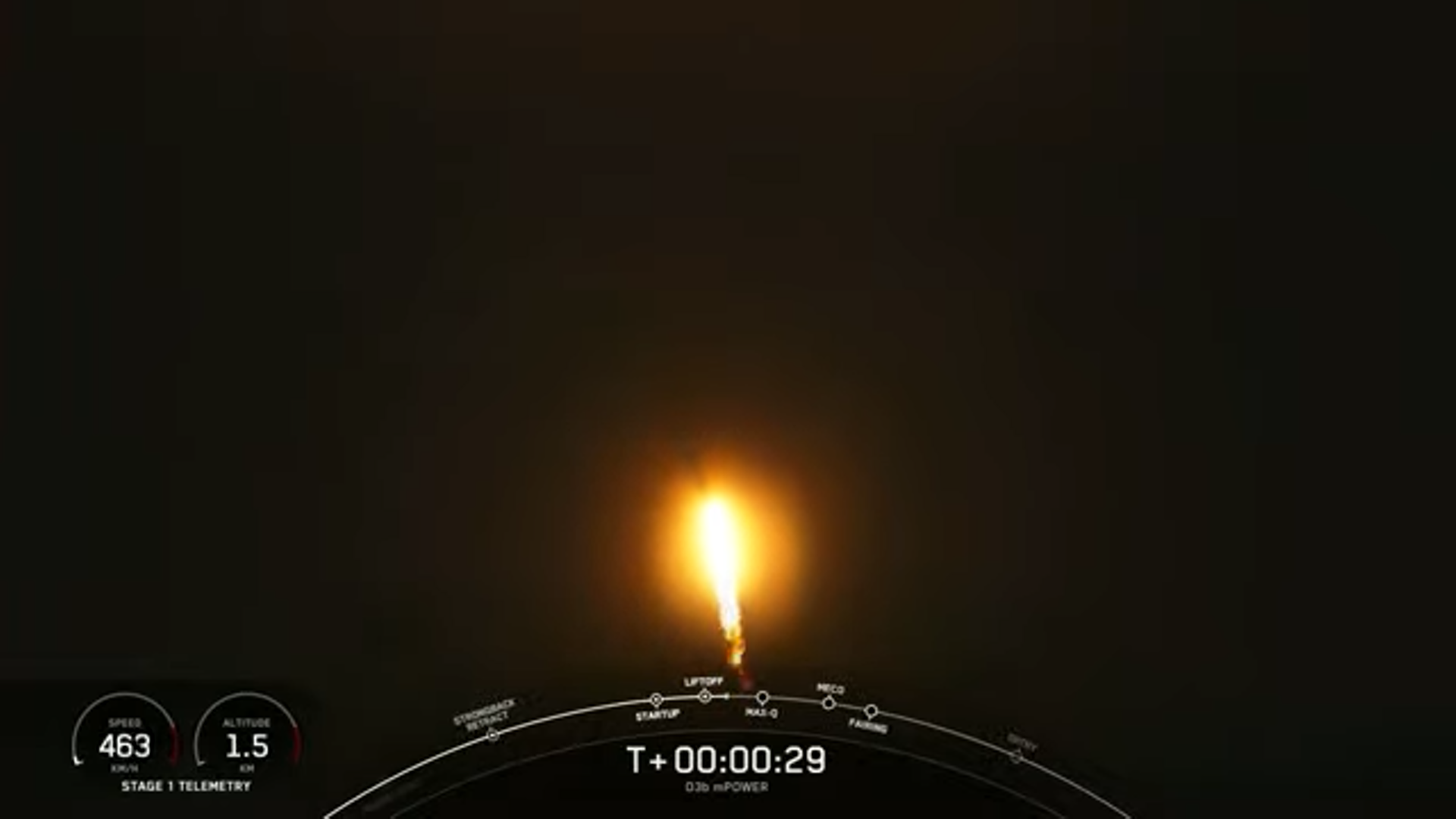
For the second time in less than half a day, a Falcon 9 speared for orbit late Friday afternoon, bringing the total number of launches achieved by SpaceX to 58 in the year’s 50th week. Veteran core B1067—making the eighth flight of her career, including five in 2022 alone—roared aloft from storied Space Launch Complex (SLC)-40 at Cape Canaveral Space Force Station, Fla., at 5:48 p.m. EST, carrying the first of three batches of O3b mPOWER broadband satellites, destined for emplacement into a 5,000-mile-high (8,000-kilometer) Medium Earth Orbit (MEO). Liftoff occurred right at the end of Friday’s 87-minute “window”.
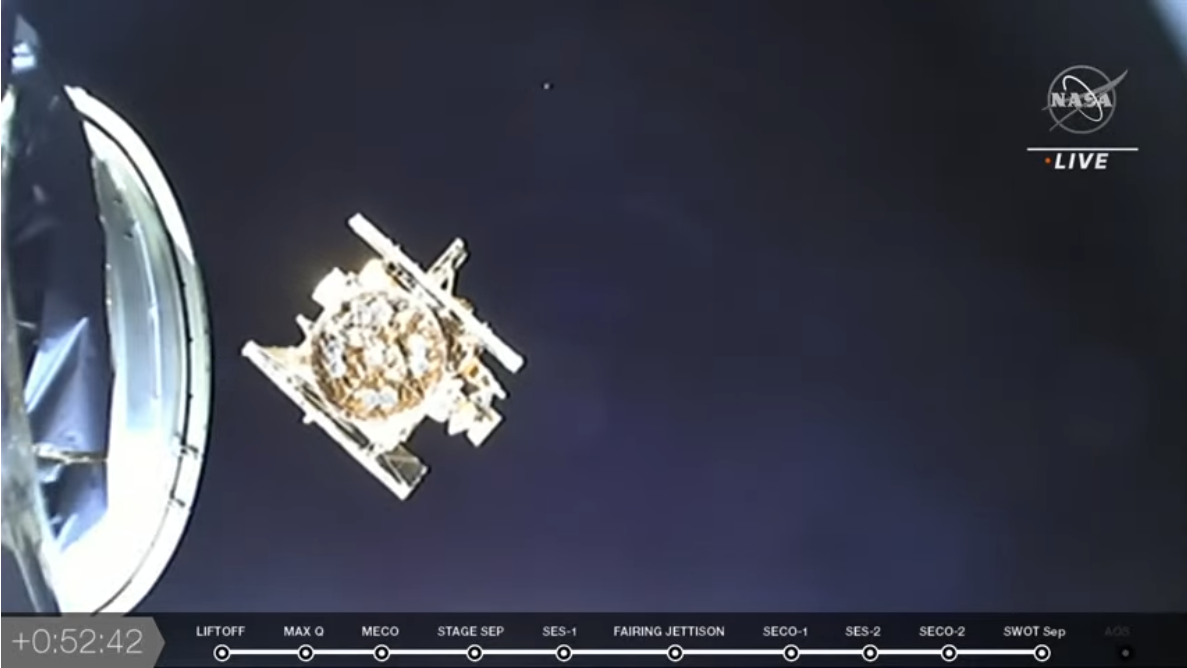
Earlier today, at 3:46 a.m. PST (6:46 a.m. EST), the B1071 core rocketed away from Space Launch Complex (SLC)-4E at Vandenberg Space Force Base, Calif., carrying the NASA-led Surface Water and Ocean Topography (SWOT) mission. Jointly developed by NASA and the Centre national d’études spatiales (CNES, the French national space agency), with collaboration from the Canadian Space Agency (CSA) and the UK Space Agency (UKSA), SWOT will spend up to three years globally surveying Earth’s surface water bodies to understand ocean-surface topography and the mechanisms responsible for terrestrial water changeability over time.
In doing so, this mission will offer the first truly “global” measurements of water levels, observing ocean circulation across 90 percent of the globe at scales as fine as 9.3-15.5 miles (15-25 kilometers), an order of magnitude better than has ever been achieved to date. SWOT carries the Ka-Band Radar Interferometer (KaRIn), a powerful Synthetic Aperture Radar (SAR) interferometry tool.
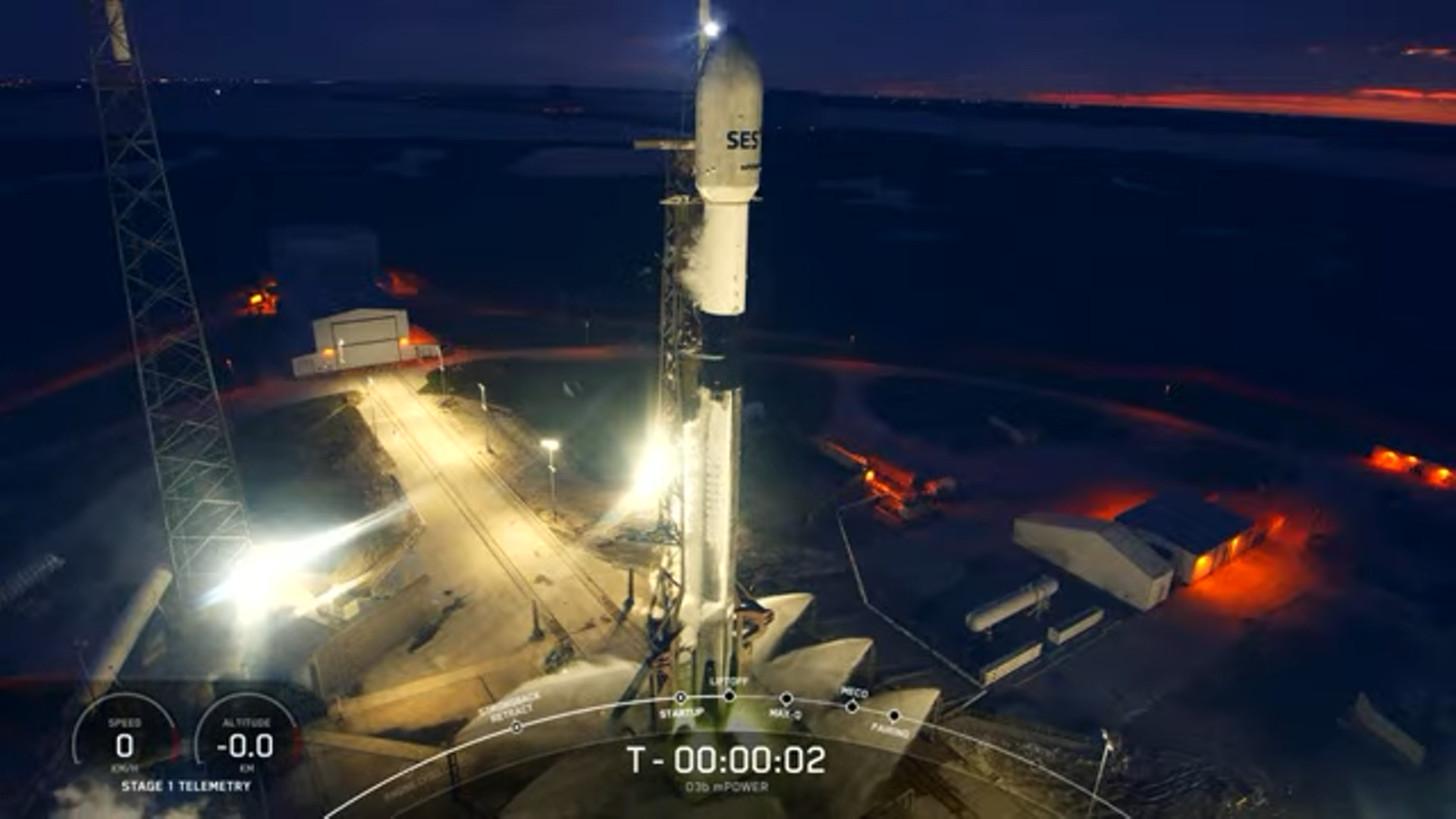
Its twin radar antennas—positioned at opposite ends of a 33-foot-long (10-meter) mast—will permit measurements of surface water elevation over a 75-mile (120-kilometer) swath. In a sense, this mission will be not unlike (though much smaller than) the interferometry radar mast deployed by Endeavour’s STS-99 crew during the Shuttle Radar Topography Mission (SRTM) way back in February 2000.
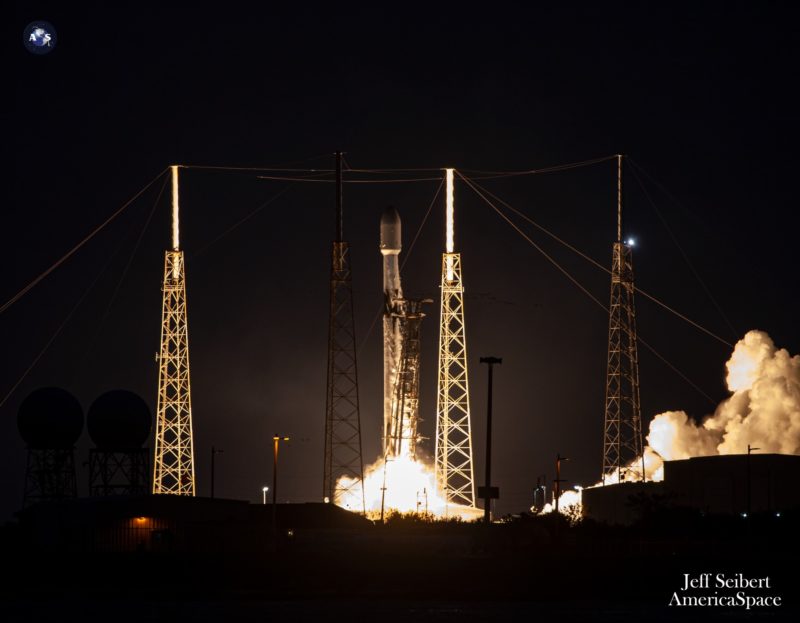
In the shadow of SWOT’s successful launch, hope was kindled that two more Falcon 9 missions might be attempted from the East Coast, within just 18 minutes of one another, later on Friday afternoon. First up from the Cape’s SLC-40 at 4:21 p.m. EST would be the eight-times-used B1067 booster, carrying two O3b mPOWER broadband satellites. Then, at 4:39 p.m. EST, B1058—poised for a record-breaking 15th launch, having entered service in May 2020 to loft NASA astronauts Doug Hurley and Bob Behnken aboard Dragon Endeavour for the historic Demo-2 mission to the International Space Station (ISS)—would rise from neighboring Pad 39A at the Kennedy Space Center (KSC), laden with 54 Starlink internet communications satellites.
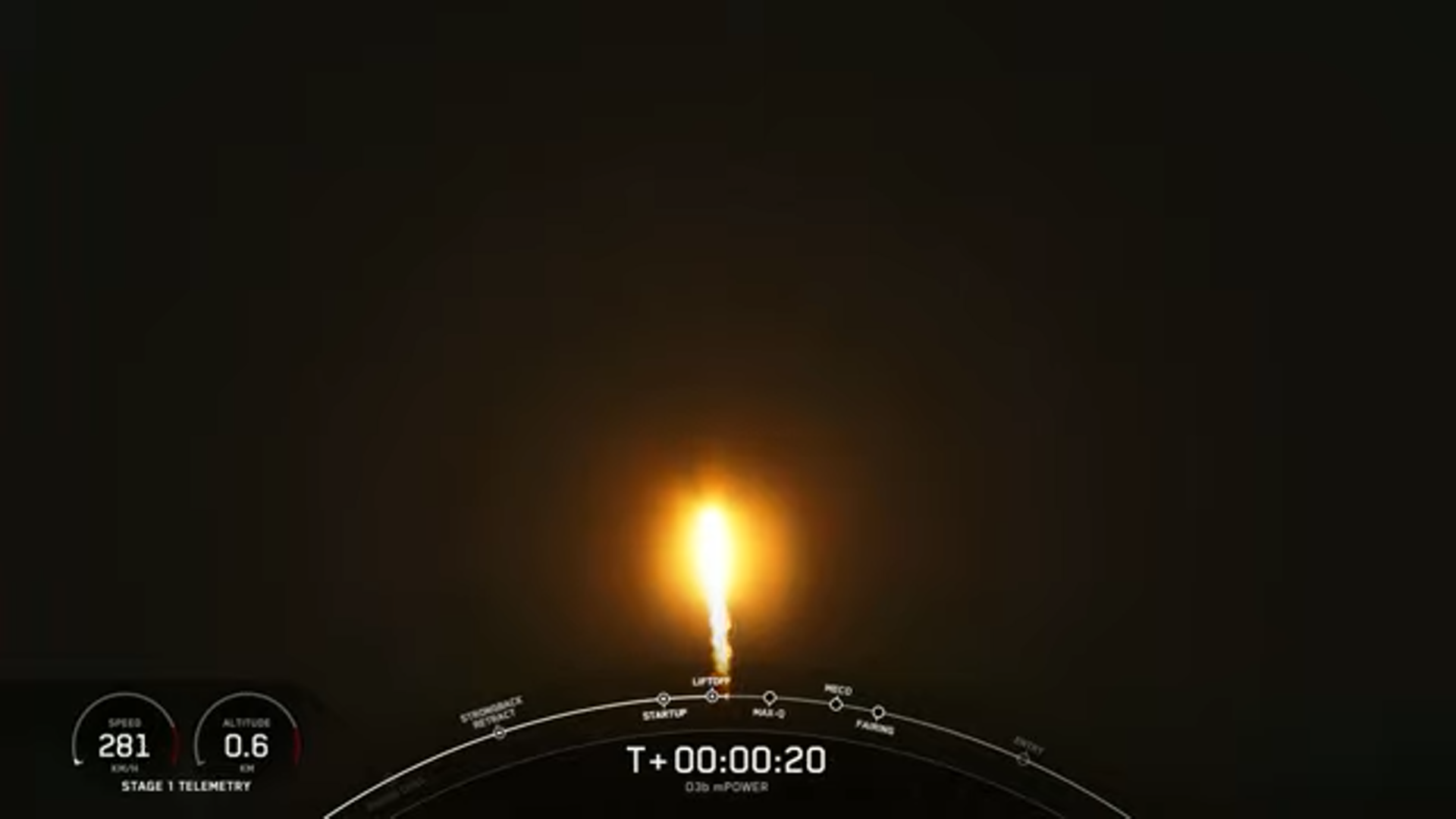
Thus, for the first time, the 45th Weather Squadron at Patrick Space Force Base published a virtually identical weather outlook for no less than two discrete missions. And Mother Nature appeared to smile on the Cape for Friday afternoon, with around a 90-percent probability of acceptable conditions, tempered by a “negligible risk” of violating the Thick Cloud Layers Rule from lingering mid-level cloud cover.
But sadly the spectacle of two Falcon 9 birds launching and returning to minutes-apart Autonomous Spaceport Drone Ship (ASDS) landings—with B1067 alighting on the deck of “A Shortfall of Gravitas”, then B1058 touching down on “Just Read the Instructions”—came disappointingly to nought late Thursday, when SpaceX tweeted that it had slipped the second mission until No Earlier Than (NET) 4:32 p.m. EST Saturday. “We are prioritizing launch of the O3b mPOWER mission on Friday afternoon,” the organization reported, “and setting up for launch of Starlink on Saturday.”
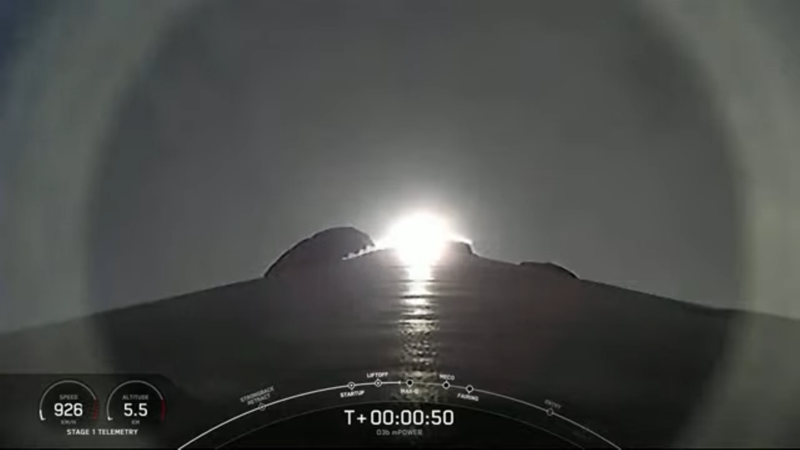
For their part, the drone ships had put to sea in good time, with ASOG departing Port Canaveral last Sunday, bound for a position in the Atlantic Ocean, some 440 miles (700 kilometers) downrange. It was followed by JRTI on Monday evening, with an expectation that the two drone ships would be as little as 325 miles (520 kilometers) apart during their minutes-apart landings.
But it was not to be. However, conditions were set up for a highly impressive triple-header of Falcon 9 missions within a span of 34 hours, which—if achieved—will neatly eclipse the 36 hours that elapsed between three launches from Vandenberg and the Cape back in June.
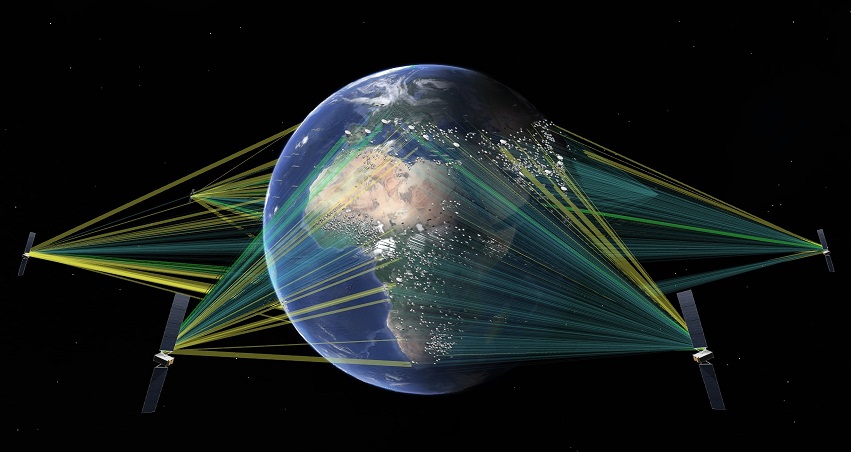
As an external customer, it might seem obvious that the O3b mPOWER mission would take priority over an in-house SpaceX Starlink flight. Built by Boeing on behalf of Luxembourg-headquartered SES, O3b mPOWER consists of a network of high-throughput, low-latency satellites, destined for emplacement into Medium Earth Orbit (MEO), at a mean altitude of 5,000 miles (8,000 kilometers).
Based in design upon Boeing’s all-electric 702 “bus”, the satellites will generate around 30,000 fully reshapeable and electronically steerable beams, which can be dynamically shifted in real time to serve customers across a multitude of markets, ranging from telecom and cloud to communications-on-the-move and government. Boeing was selected by SES in September 2017 to build an initial seven O3B mPOWER satellites, with another four subsequently added to the contract in August 2020. When operational, O3b mPOWER pledges connectivity services ranging from 500 Mbps to multiple gigabits of data per second to a single user.
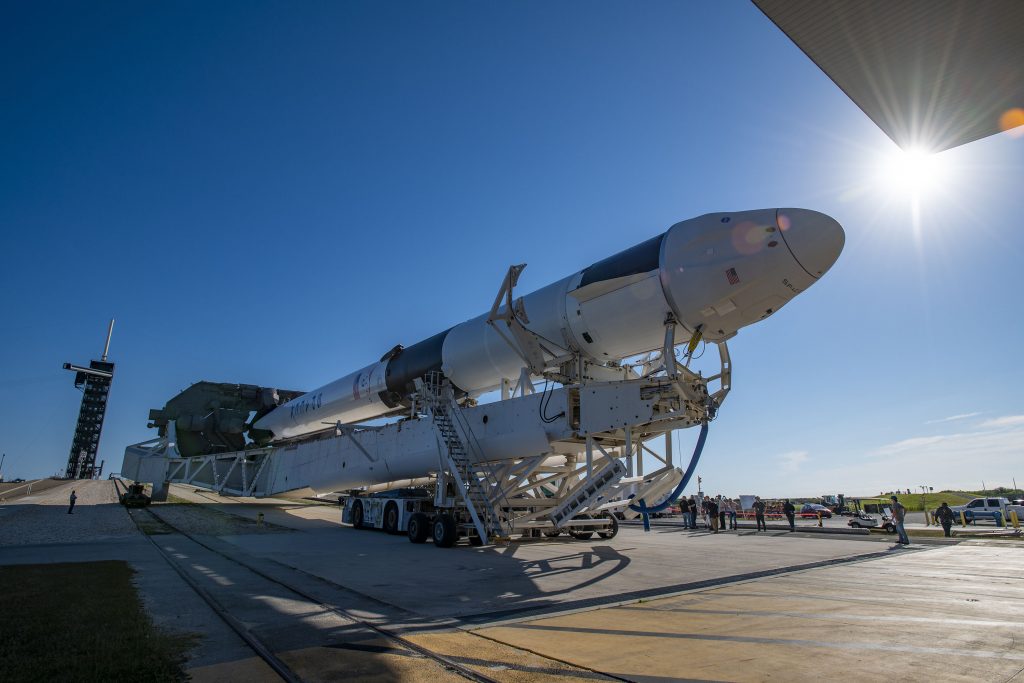
“SES’ O3b mPOWER system is a true game-changer and will transform the way people think about connectivity,” said Ruy Pinto, chief technology officer at SES. “Delivering performance above all, O3B mPOWER will offer connectivity services to government organizations and enterprises based in the most remote regions. In times of natural disasters, when networks are disrupted, O3B mPOWER’s low-latency services can quickly restore critical communications networks.”
With Friday’s launch targeted during an 87-minute “window”, which opened at 4:21 p.m. EST, it came as something of a surprise when SpaceX adjusted the T-0 firstly to 5:21 p.m. EST and ultimately to 5:48 p.m. EST, right at the end of the window.
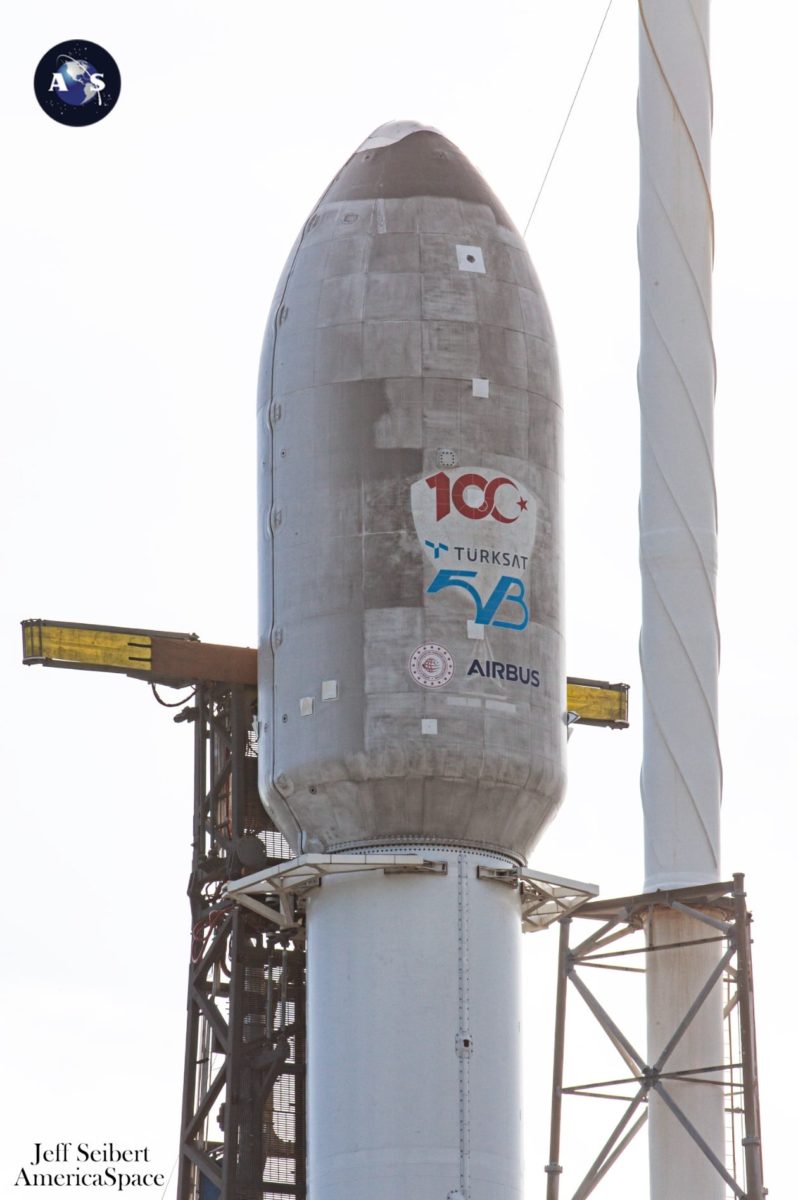
B1067 rose ponderously from SLC-40 at the cusp of sunset, powering smoothly uphill for the first two minutes of the flight. This booster entered SpaceX’s fleet in June of last year, when she kicked off the month-long CRS-22 Cargo Dragon mission to the ISS.
She went on to deliver eight astronauts from the United States, Germany and Italy to the space station in November 2021 and last April. In addition, last December, B1067 lofted a powerful geostationary communications satellite for Turkey, followed by the CRS-25 Cargo Dragon last July, a dedicated Starlink mission in mid-September and the high-powered Hotbird 13G broadband satellite just last month.
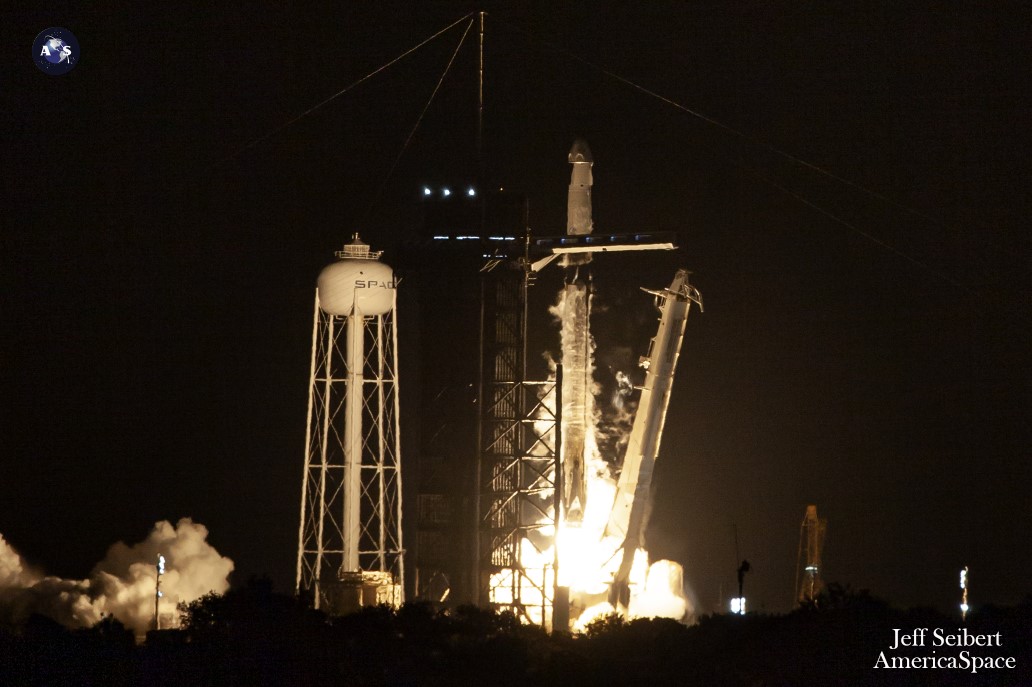
Separating from the rest of the Falcon 9 stack, B1067 returned to a smooth oceanic touchdown—her eighth overall, and her fifth on ASOG—a little less than nine minutes after launch. The Merlin 1D+ Vacuum engine of the second stage then ignited for a standard six-minute-long burn, followed by a pair of shorter burns later in the coast phase, preparatory to deployment of the O3B mPOWER twins.
As this AmericaSpace story was completed, the two satellites were set to be deployed at 113 minutes and 120 minutes into tonight’s mission. Up next, B1058 stands ready for her record-breaking 15th launch, no sooner than 4:32 p.m. EST Saturday.




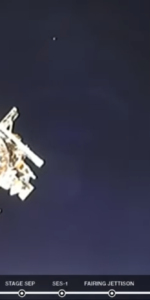

15 Comments
15 Pings & Trackbacks
Pingback:Bob & Doug’s Falcon 9 Makes 15th Launch, Sets New Records - AmericaSpace
Pingback:Bob & Doug’s Falcon 9 Makes 15th Launch, Sets New Records - Space News
Pingback:SpaceX Heads for 60th Launch of 2022; East and West Coast Missions Planned Before New Year’s Eve - AmericaSpace
Pingback:SpaceX Launches Year’s 60th Mission, Looks Ahead to Busy 2023 - AmericaSpace
Pingback:SpaceX’s First 2023 Mission Includes 114-Strong Payload Haul - AmericaSpace
Pingback:SpaceX Aims for Two Launches Tonight, Watches Vandenberg Weather - AmericaSpace
Pingback:SpaceX jette ce brunante, gardez un œil sur la météo de Vandenberg – spyxfamily-es
Pingback:SpaceX Launches 200th Falcon 9, Continues Vandenberg Cadence - Space News
Pingback:Launch-Heavy February Dawns With 200th Falcon 9 Mission Success - AmericaSpace
Pingback:Launch-Heavy February Dawns With 200th Falcon 9 Mission Success - Space News
Pingback:SpaceX Launches Hispasat’s Amazonas Nexus, First Commercial Geostationary Mission of 2023 - Space News
Pingback:SpaceX Launches Hispasat’s Amazonas Nexus, First Commercial Geostationary Mission of 2023 - AmericaSpace
Pingback:Relativity, SpaceX Target Florida Launches This Week - AmericaSpace
Pingback:SpaceX Launches Seventh Falcon 9 of March, Looks Ahead to 80-Mission Year - AmericaSpace
Pingback:SpaceX Flies Third Starlink Mission of May, Attention Turns to Next Week’s Ax-2 Launch - AmericaSpace